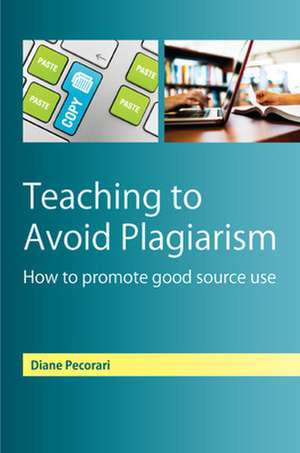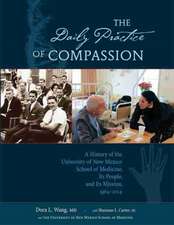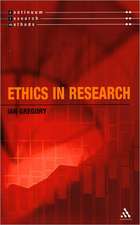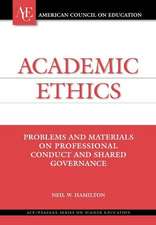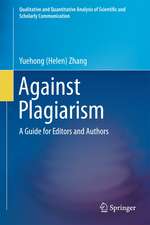Teaching to Avoid Plagiarism: How to Promote Good Source Use
Autor Diane Pecorarien Limba Engleză Paperback – 16 aug 2013
Topics covered in this book include:
- The causes of plagiarism
- How universities currently deal with plagiarism
- How teachers can support students in effective source use
- The role of technology
- Issues for second language writers and international students
"Diane Pecorari’s book provides practical examples and activities on handling plagiarism blended with research-based findings. It is useful for teachers wanting to improve their understanding and practices in managing plagiarism, but also student advisors and academic support skills staff who deal with issues of academic integrity. This book makes a unique contribution to the field of plagiarism management as its structure affords direct professional development opportunities."Dr Wendy Sutherland-Smith, School of Psychology, Faculty of Health, Deakin University, Australia
"Teaching to Avoid Plagiarism successfully turns attention away from the detection and punishment of plagiarism and focuses instead on understanding and prevention through the promotion of good source use."
Maggie Charles, Oxford University Language Centre
"Diane Pecorari’s insightful research and scholarship on plagiarism is used to excellent effect in this book which advocates a proactive rather than reactive approach to the difficulties faced by students in learning how to integrate their source texts."
Dr Ann Hewings, Director, Centre for Language and Communication, The Open University
"As stated by Diane Pecorari in the first sentence of this excellent volume, 'plagiarism is a problem in our universities'. The volume demonstrates clearly how teachers and students can deal with this 'problem' by developing a better understanding of the phenomenon, on the one hand, and developing specific skills in dealing with it, on the other."
Professor John Flowerdew, City University of Hong Kong
Preț: 264.41 lei
Nou
Puncte Express: 397
Preț estimativ în valută:
50.60€ • 54.10$ • 42.18£
50.60€ • 54.10$ • 42.18£
Carte tipărită la comandă
Livrare economică 18 aprilie-02 mai
Preluare comenzi: 021 569.72.76
Specificații
ISBN-13: 9780335245932
ISBN-10: 0335245935
Pagini: 208
Ilustrații: black & white illustrations
Dimensiuni: 150 x 228 x 11 mm
Greutate: 0.29 kg
Ediția:New.
Editura: McGraw Hill Education
Colecția Open University Press
Locul publicării:United Kingdom
ISBN-10: 0335245935
Pagini: 208
Ilustrații: black & white illustrations
Dimensiuni: 150 x 228 x 11 mm
Greutate: 0.29 kg
Ediția:New.
Editura: McGraw Hill Education
Colecția Open University Press
Locul publicării:United Kingdom
Cuprins
Introduction
Part One: Understanding Plagiarism
Chapter 1: What is plagiarism?
Chapter 2: Why does plagiarism happen?
Chapter 3: How do we manage plagiarism?Part Two: Managaing Plagiarism
Chapter 4: What do writers need to know to avoid plagiarism?
Chapter 5: How can teachers support student learning about source use?
Chapter 6: What support can institutions offer?
Part Three: Contextualising Plagiarism
Chapter 7: International students and second-language writers
Chapter 8: Differences across academic subjects
Chapter 9: Diversity and change
Chapter 10: Plagiarism in a broader context
Appendix A: Training teachers in a good source-use pedagogy
Appendix B: Case Studies
Appendix C: Sources of examples
Part One: Understanding Plagiarism
Chapter 1: What is plagiarism?
Chapter 2: Why does plagiarism happen?
Chapter 3: How do we manage plagiarism?Part Two: Managaing Plagiarism
Chapter 4: What do writers need to know to avoid plagiarism?
Chapter 5: How can teachers support student learning about source use?
Chapter 6: What support can institutions offer?
Part Three: Contextualising Plagiarism
Chapter 7: International students and second-language writers
Chapter 8: Differences across academic subjects
Chapter 9: Diversity and change
Chapter 10: Plagiarism in a broader context
Appendix A: Training teachers in a good source-use pedagogy
Appendix B: Case Studies
Appendix C: Sources of examples
